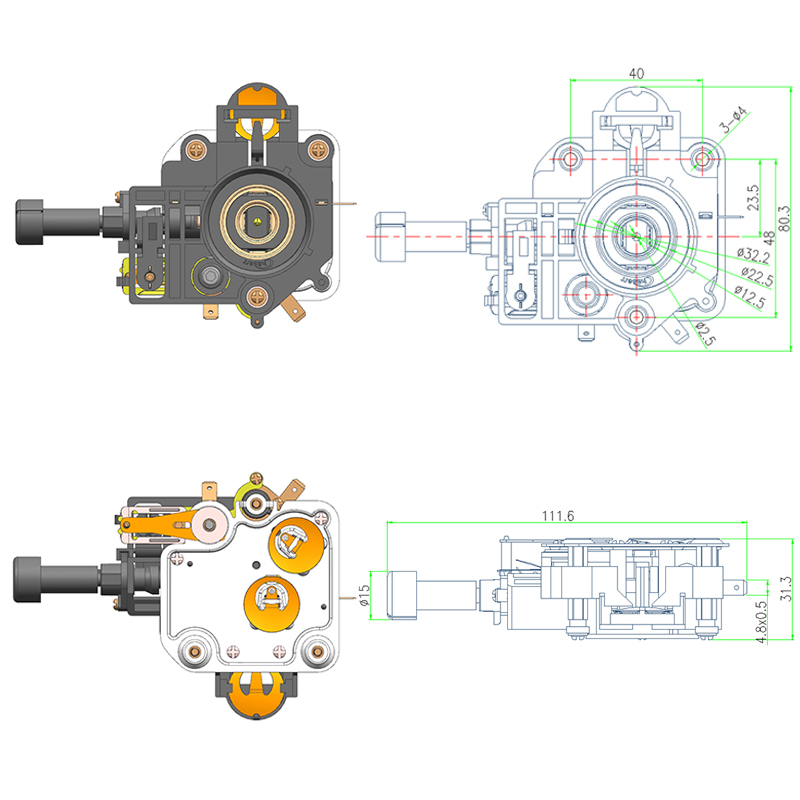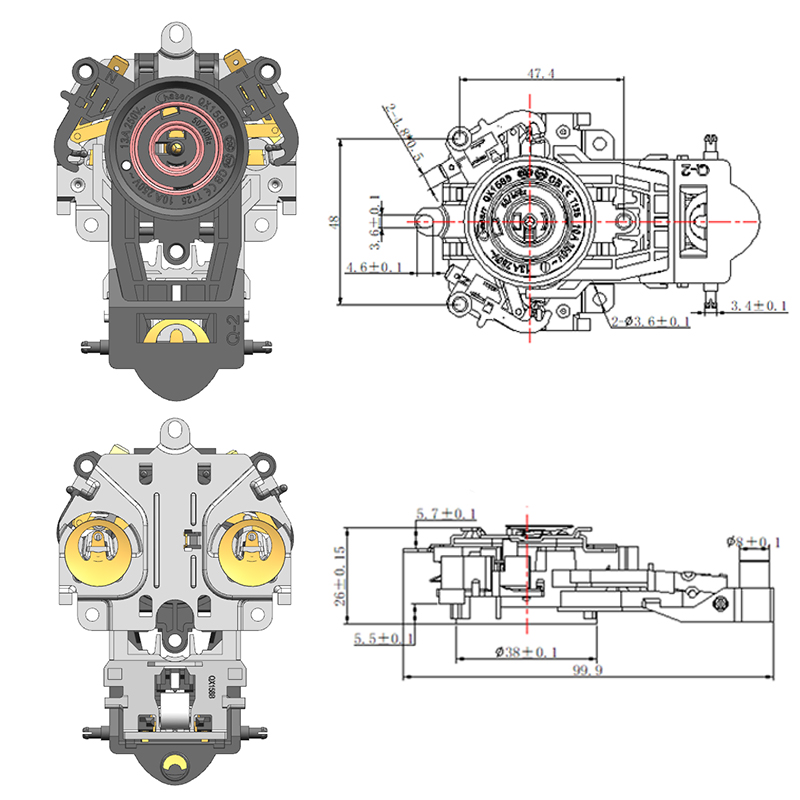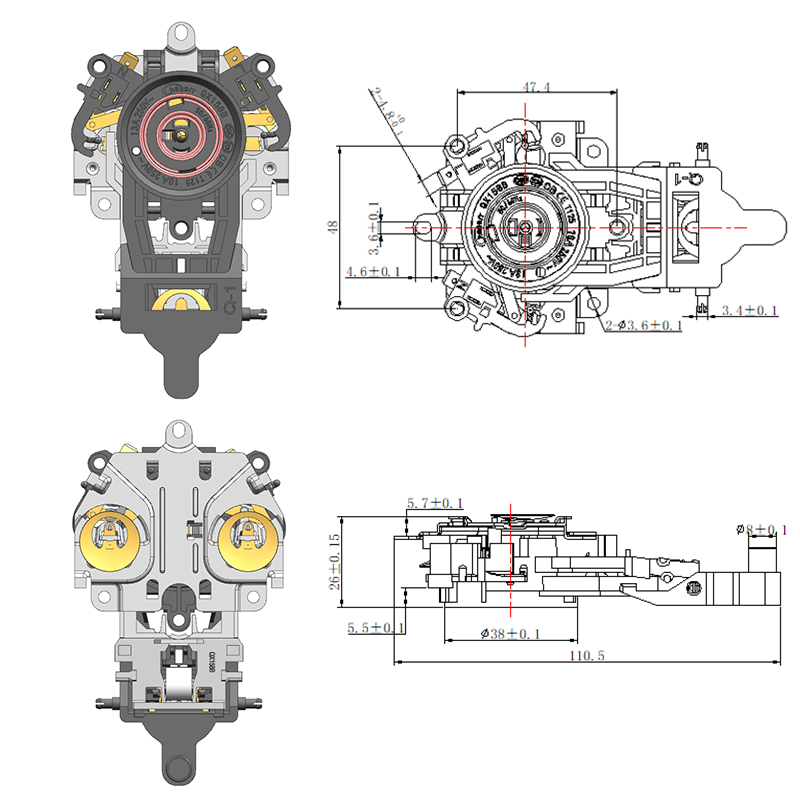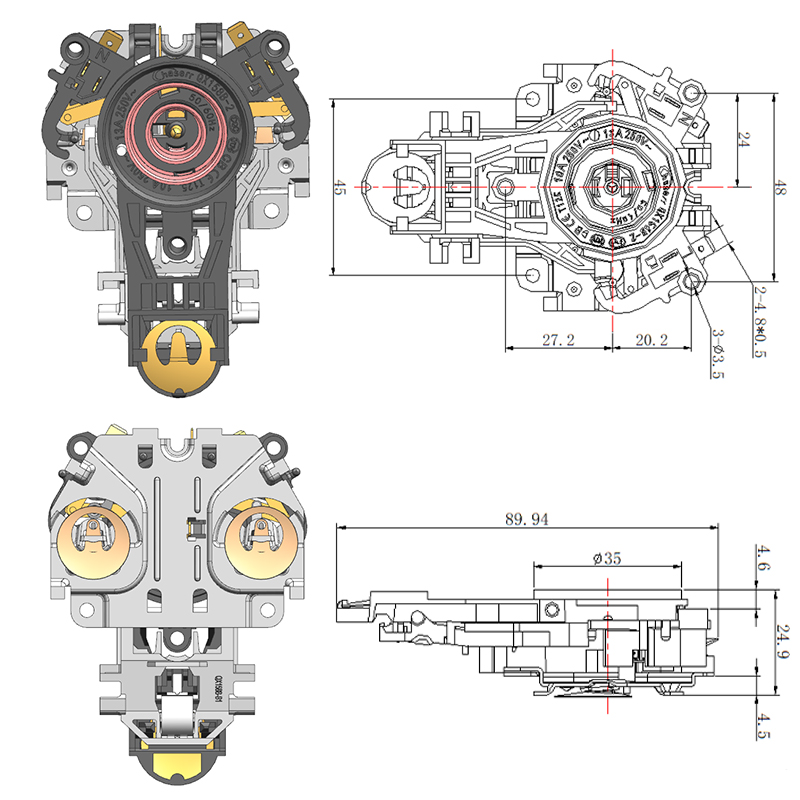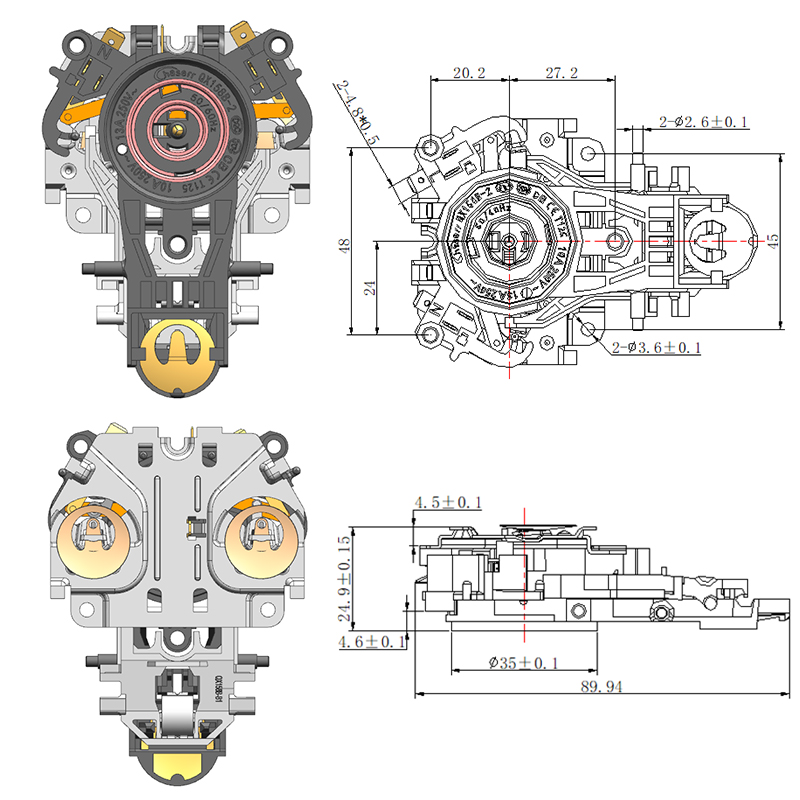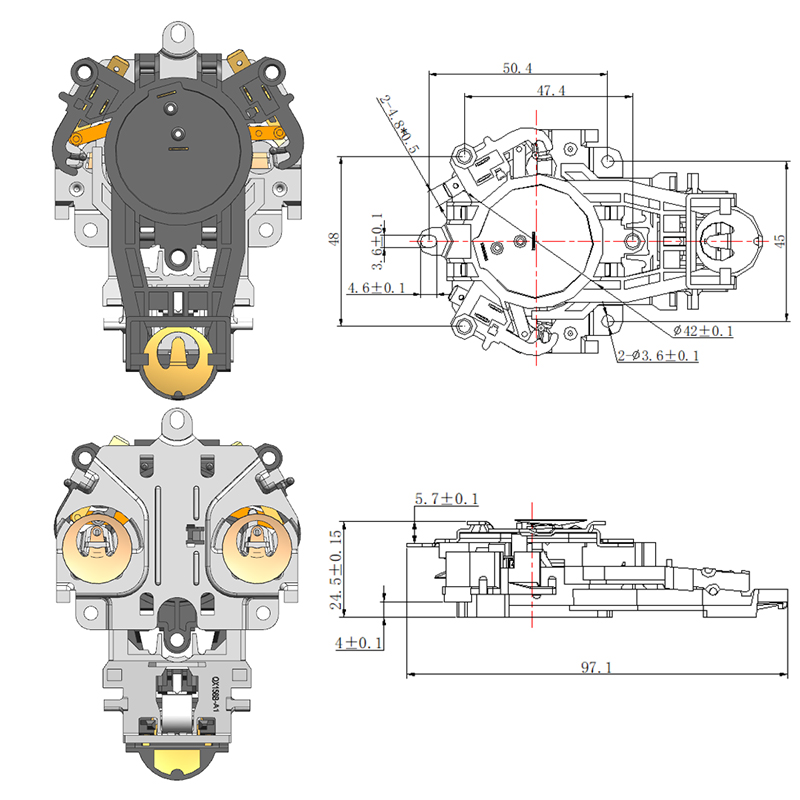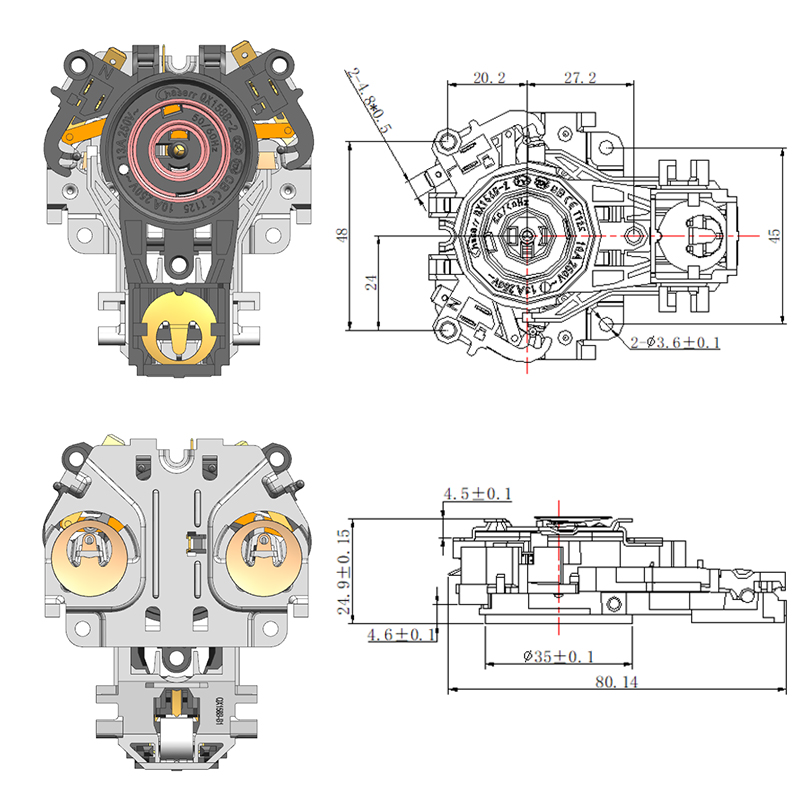A Comprehensive Guide to the Structural Components of an Electric Kettle Base Assembly
The Power Connector and Rotational Contact System
One of the recognizable features of the electric kettle base is the 360-degree rotational connector. This design enables the kettle to sit on the base in any orientation, providing convenience and ease of handling. The connector system generally includes a central metal pin and corresponding contact rings. When the kettle is placed on the base, these conductive surfaces align and allow electricity to flow from the base to the heating element in the kettle.
The materials used for these connectors must be highly conductive, corrosion-resistant, and heat-tolerant. Typically, brass or copper alloys are chosen for their electrical performance and durability. The design ensures resistance and a secure electrical connection every time the kettle is placed on the base.
Internal Wiring and Insulation Layers
Within the electric kettle base, a complex yet compact network of wires transmits electricity from the external power cord to the central connector and associated components. These wires are carefully insulated and arranged to prevent overheating and short circuits. Insulation materials like silicone or high-temperature PVC are commonly used to meet safety standards.
Wire routing is another critical element, designed to ensure the interior of the base remains organized and free from loose components. A tidy layout not only contributes to the base's long-term reliability but also facilitates easy assembly during manufacturing and safe repair or inspection procedures if necessary.
Temperature Control and Safety Mechanisms
One of the key safety features integrated into the base assembly is the thermostat. Electric kettle thermostat parts regulate the heating process by detecting the internal temperature and triggering the shut-off mechanism once the desired temperature is reached. These components are usually thermally linked to the kettle's heating plate via a central connection point, allowing accurate temperature monitoring.

High-quality electric kettle thermostat parts often include bimetal elements or thermistors, which provide consistent performance and reduce the risk of overheating. Some advanced models may also feature boil-dry protection, automatically turning off the kettle when no water is detected.
Switch Mechanism and Control Integration
Kettle switch parts play an essential role in the user interface and internal control logic of the appliance. Located within the base or in close connection to it, these switches allow the user to start or stop the heating process manually. More importantly, they often serve as a physical fail-safe to disconnect power when thermal limits are reached.
These components must be designed to withstand thousands of cycles of use. The contact materials, spring mechanisms, and actuator designs all contribute to the performance and durability of the switch. A responsive and reliable switch assembly ensures both convenience and safety during operation.
Heat Dissipation and Structural Support
Heat management is a key consideration in the structural design of an electric kettle base. Even though the heat is generated in the kettle body, residual heat may transfer downward to the base. As a result, the base is often constructed using heat-resistant polymers, reinforced plastics, or metals equipped with ventilation slots or thermal barriers.
Additionally, internal brackets and support posts hold the components in place. These structural elements are designed to endure mechanical stress, vibration, and thermal expansion. A stable structural layout reduces the chances of component misalignment or breakage during prolonged use.

 English
English  中文简体
中文简体  Español
Español 
